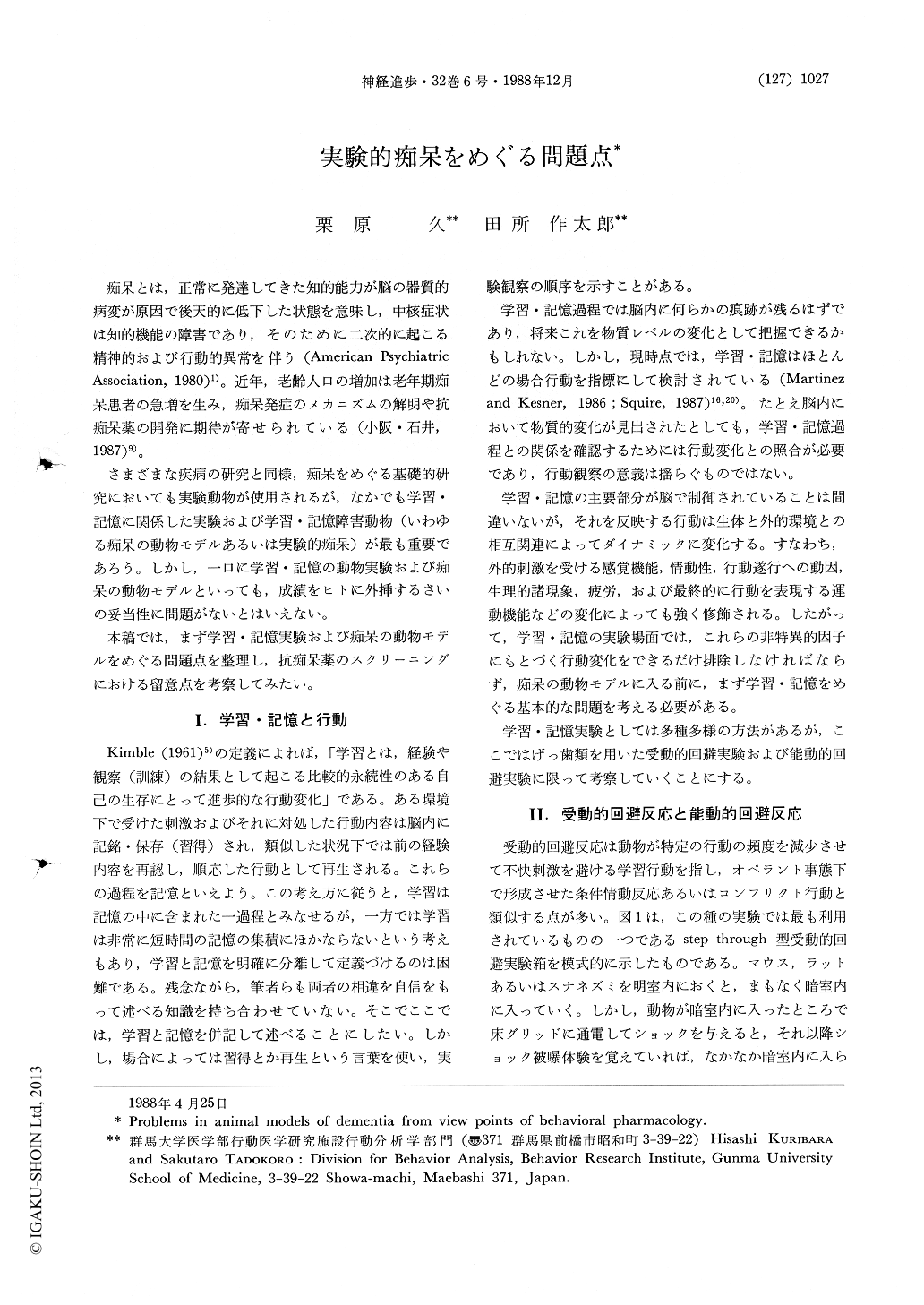Japanese
English
- 有料閲覧
- Abstract 文献概要
- 1ページ目 Look Inside
痴呆とは,正常に発達してきた知的能力が脳の器質的病変が原因で後天的に低下した状態を意味し,中核症状は知的機能の障害であり,そのために二次的に起こる精神的および行動的異常を伴う(American Psychiatric Association,1980)1)。近年,老齢人口の増加は老年期痴呆患者の急増を生み,痴呆発症のメカニズムの解明や抗痴呆薬の開発に期待が寄せられている(小阪・石井,1987)9)。
さまざまな疾病の研究と同様,痴呆をめぐる基礎的研究においても実験動物が使用されるが,なかでも学習・記憶に関係した実験および学習・記憶障害動物(いわゆる痴呆の動物モデルあるいは実験的痴呆)が最も重要であろう。しかし,一口に学習・記憶の動物実験および痴呆の動物モデルといっても,成績をヒトに外挿するさいの妥当性に問題がないとはいえない。
Recently, experiments of learning and memory in animals become to be received much attention not only for psychopathological investigation of dementia but also for evaluation of antidementia drugs. However, a standard procedure as well as a basic investigation for these purposes have not been estab-lished. One trial passive avoidance and active avoidance tests in rodents have been widely used in the behavioral tests of learning and memory, though the following fundamental problems are pointed out.
The passive avoidance response is imperfectly acquired only by a single training. The response once acquired fluctuates day by clay when the retention trials are conducted for several days. In particular, Mongolian gerbils exhibit an extremely poorer acquisition and maintenance of the passive avoidance response as compared with mice and rats. Thus, the response latency time alone is insufficient to estimate the grade of memory.

Copyright © 1988, Igaku-Shoin Ltd. All rights reserved.


